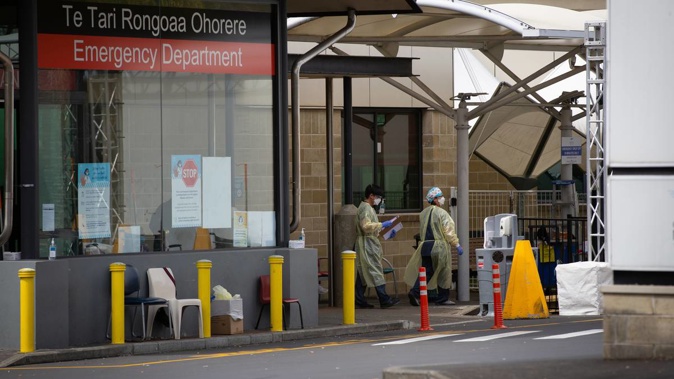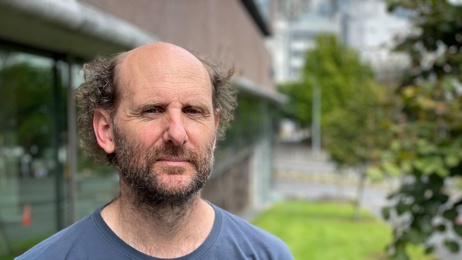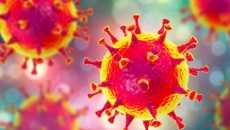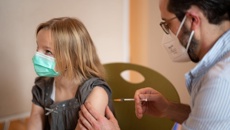
There are 11 Covid-related deaths, 12,882 new cases in the community and 861 people in hospital - including 21 in ICU - today.
Of the 11 deaths, two were from the Auckland region, five from Waikato and one each from MidCentral and Nelson Marlborough. The details for the other deaths are unavailable at this stage.
Three people were in their 70s, three in their 80s and three people were in their 90s. Seven were men and two were women.
Of the 861 people in hospital, 32 are in Northland, 141 in North Shore, 188 in Middlemore, 144 in Auckland, 77 in Waikato, 40 in Bay of Plenty, eight in Lakes, three in Tairāwhiti, 43 in Hawke's Bay, 14 in Taranaki, 5 in Whanganui, 23 in MidCentral,17 in Hutt Valley, 31 in Capital and Coast, 1 in Wairarapa, 11 in Nelson Marlborough, 53 in Canterbury, 4 in South Canterbury, two in West Coast and 24 in Southern.
The average age of current hospitalisations is 59.
The latest figures show that those aged over 12 who are unvaccinated and are in hospital are five times over-represented compared to those who are vaccinated.
Just under 3 per cent of people aged 12 and over in the Northern Region have had no doses of the vaccine, while there are 15 per cent of people aged 12 and over who are unvaccinated in those same areas in hospital.
The seven-day rolling average of community cases is 16,102.
The locations and numbers of new community cases are Northland (445), Auckland (2300), Waikato (1215), Bay of Plenty (662), Lakes (360), Hawke's Bay (701), MidCentral (728), Whanganui (291), Taranaki (544), Tairāwhiti (179), Wairarapa (176), Capital and Coast (918), Hutt Valley (498), Nelson Marlborough (506), Canterbury (2,119), South Canterbury (235), Southern (968), West Coast (32).
Five are unknown.
There are 52 new cases at the border.
The total number of confirmed cases now sits at 609,327.
Of the new community cases, 12,711 were identified by a RAT while 171 were confirmed by a PCR test.
Currently 19 per cent of people in hospital are unvaccinated or not eligible, 3 per cent are partially immunised, 32 per cent are double vaccinated and 39 per cent are boosted. The vaccination status of 8 per cent of cases is unknown.
Of NZ's eligible population, 72.7 per cent are boosted.
Some 57.8 per cent of the eligible Maori population are boosted and 59.3 per cent of Pacific people.
Just over half of children aged 5 to 11 have had their first dose of the vaccine and 14.7 per cent have had both doses.
The Ministry of Health is encouraging people to get boosted, especially with Easter weekend gatherings approaching. The booster restores vaccine effectiveness for Omicron to 90 per cent after it declines following the second dose.
"Often those at the greatest risk of becoming sick with Covid-19 are older family members and those with comorbidities such as asthma, diabetes and other long-term conditions," today's MoH statement said.
The ministry has updated advice for critical healthcare workers wishing to return to work if they have Covid-19 - or are a household contact - to enable healthcare staff who are cases or contacts to return to work if they choose to, are well and have regular negative rapid antigen tests.
The new advice for health workers means all health and disability services and their workers can continue to operate in any setting under the Covid-19 Protection Framework whether they are deemed to be critical or not.
In the current phase, critical health workers who are close contacts can utilise rapid antigen tests (RATs) to ensure they can return to work during their isolation period providing they produce a negative test prior to their shift.
This reflects the critical nature of their work including the necessity of these services to prevent death or serious harm and that these services can only be conducted in person in the workplace.
All other workers across the health and disability system are still required to operate under the Covid-19 Protection Framework and close contacts should follow the self-isolation guidelines highlighted on the MoH's contact tracing page.
Meanwhile, Michael Plank from the University of Canterbury and Covid-19 Modelling Aotearoa told RNZ he expected the death rate to continue for a few more weeks, and ultimately between 300 and 500 people to die by the end of the first Omicron wave.
"Because although it looks like cases have peaked, deaths [lag behind]," Plank said.
The death total was at about the lower to middle end of projections from earlier this year - which picked between 400 and 1200 deaths, he said.
A reason for New Zealand's low death rate was high booster uptake among older people and young people comprising a large amount of those infected.
Otago University epidemiologist Professor Michael Baker also told RNZ that Plank's predictions are "very plausible."
"It does still depend on the behaviour of New Zealanders," he said.
Asked what were New Zealand's Achilles' heels, Baker said there were two big, entirely preventable gaps.
Just over half of 5 to 11-year-olds were vaccinated - the good news was they had low mortality but the bad news was that they were susceptible to Long Covid.
The second concerning gap was that almost 1 million eligible New Zealanders had not had their booster.
"This is absolutely lifesaving for people, at the very least it may prevent you having a miserable illness for a couple of weeks."
Meanwhile Covid-19 Modelling Aotearoa project leader Dion O'Neale hopes hospitalisation rates have peaked.
He said for this wave, the country appears to have avoided a health system "collapse" some people were worried about.
"From the data I've seen anyway it looks like we are scraping through and managed to maybe, hopefully, get past the worst of this peak without exceeding that capacity."
And on the death rate, O'Neale said New Zealand's was at about the international standard for an Omicron wave.
He said the numbers look to be comparable to other countries: "We're not looking outstanding in either direction for death rates."
Take your Radio, Podcasts and Music with you









